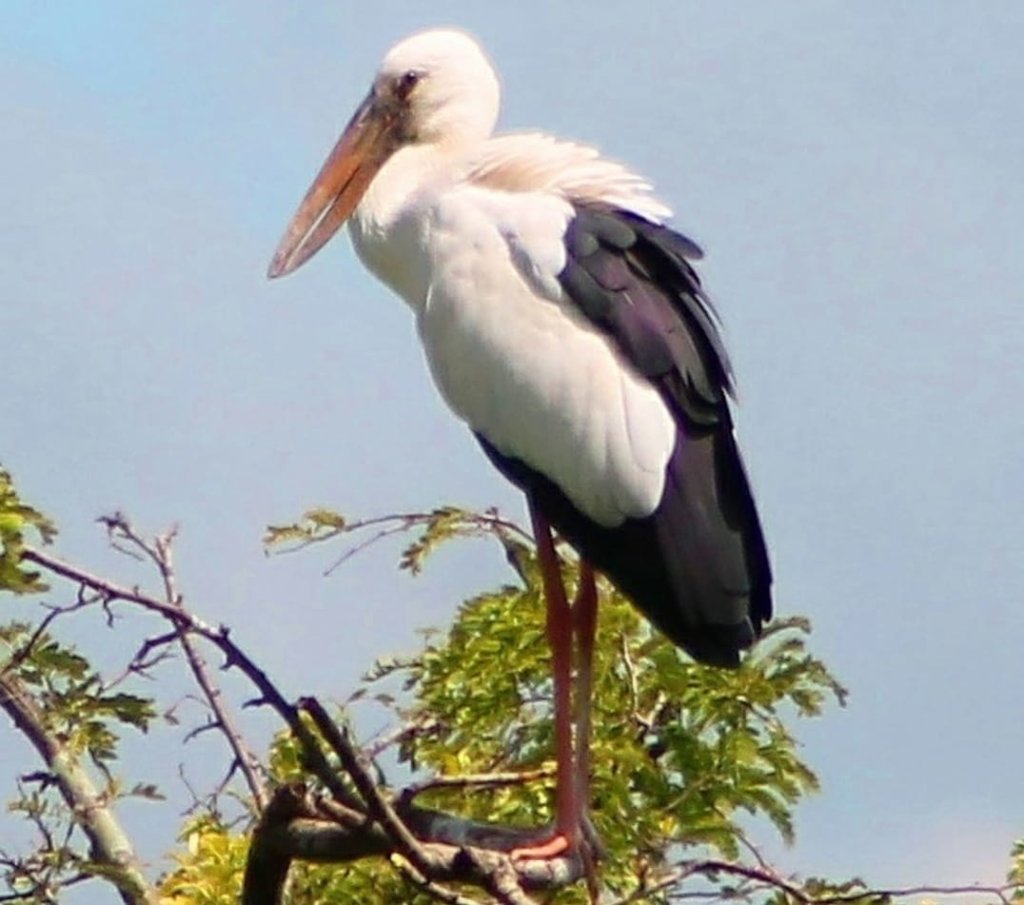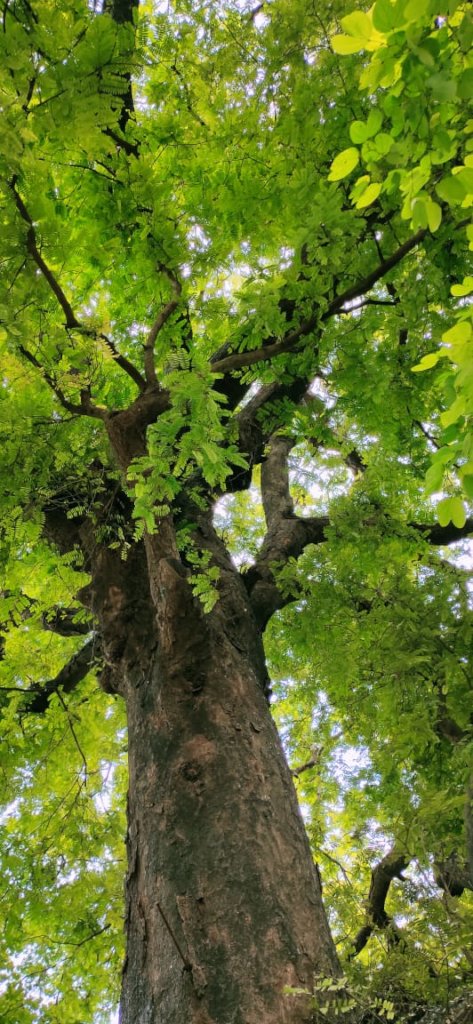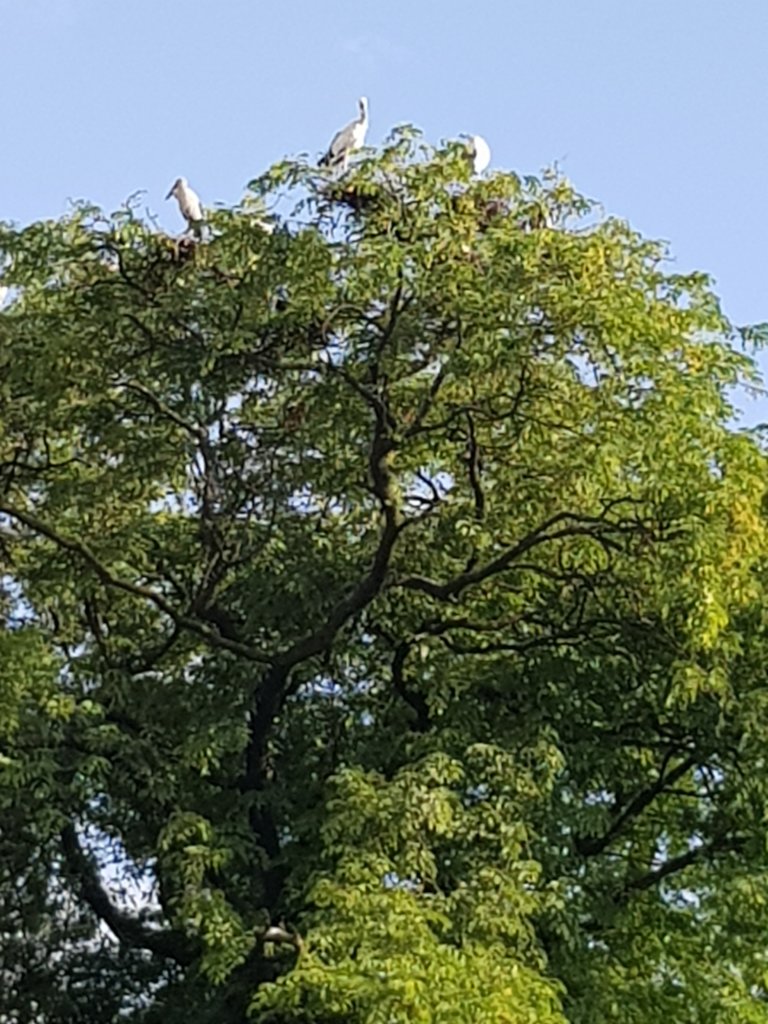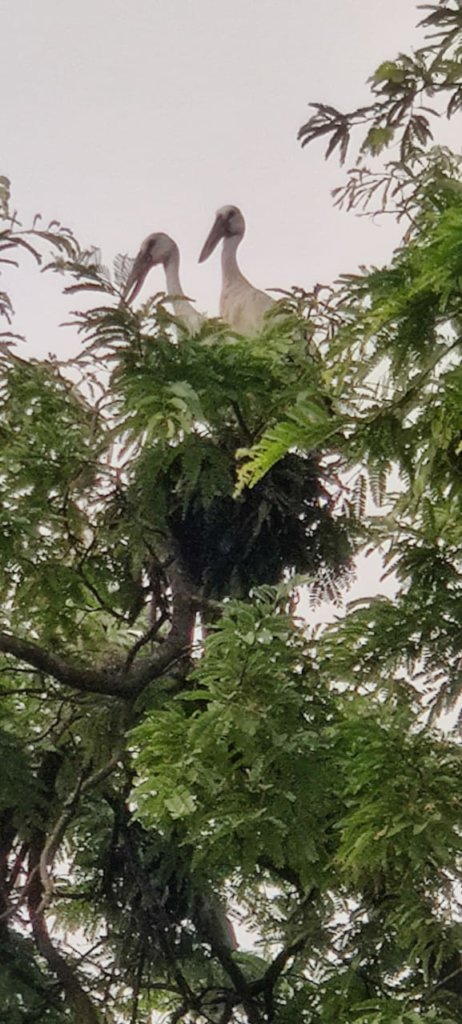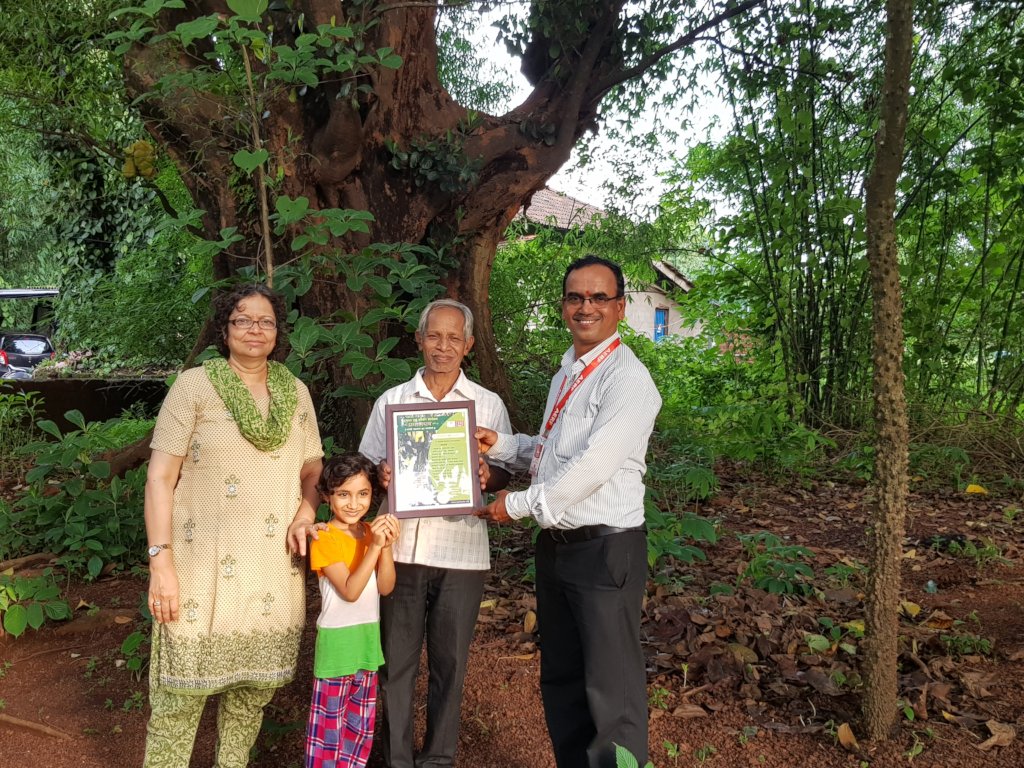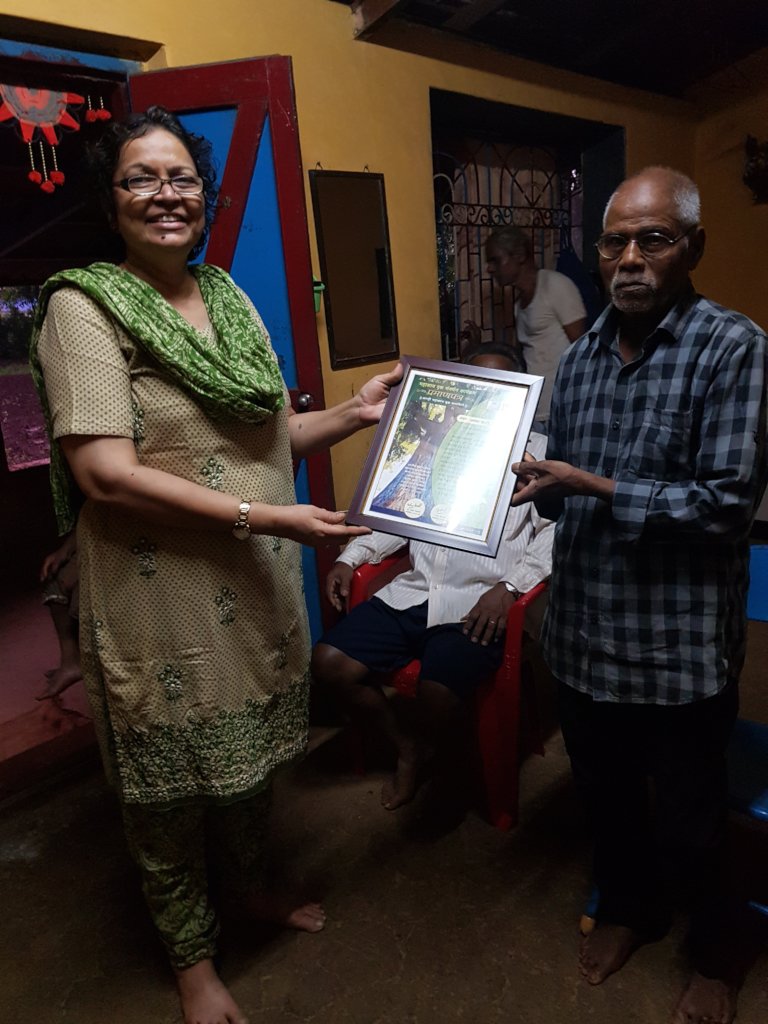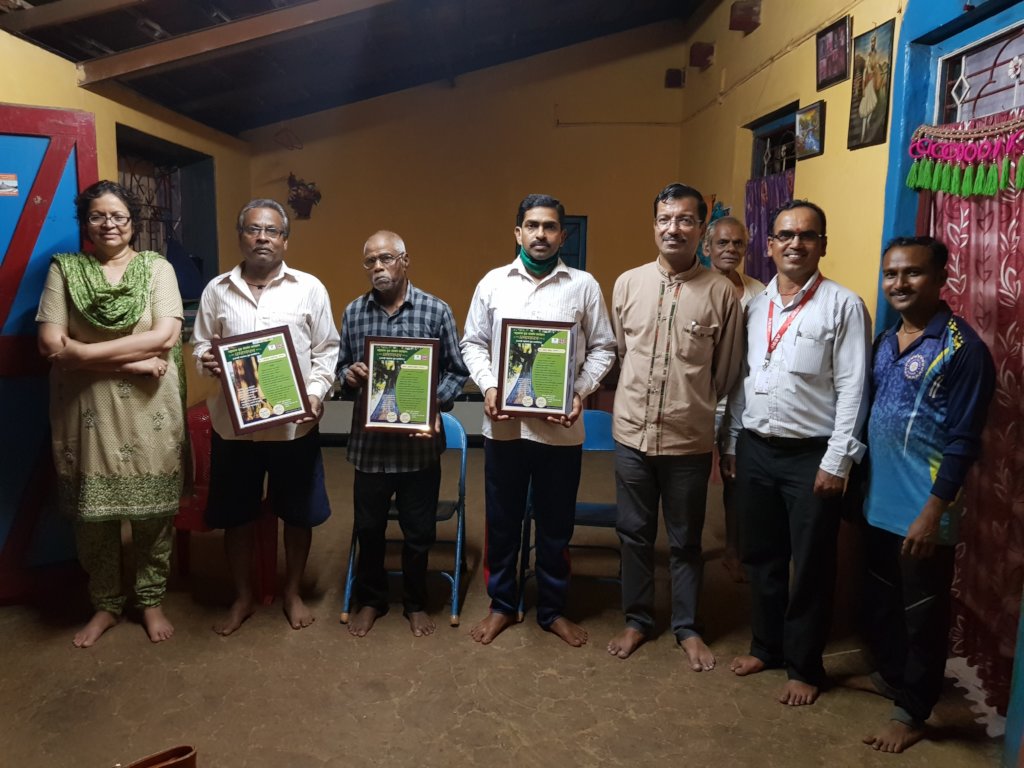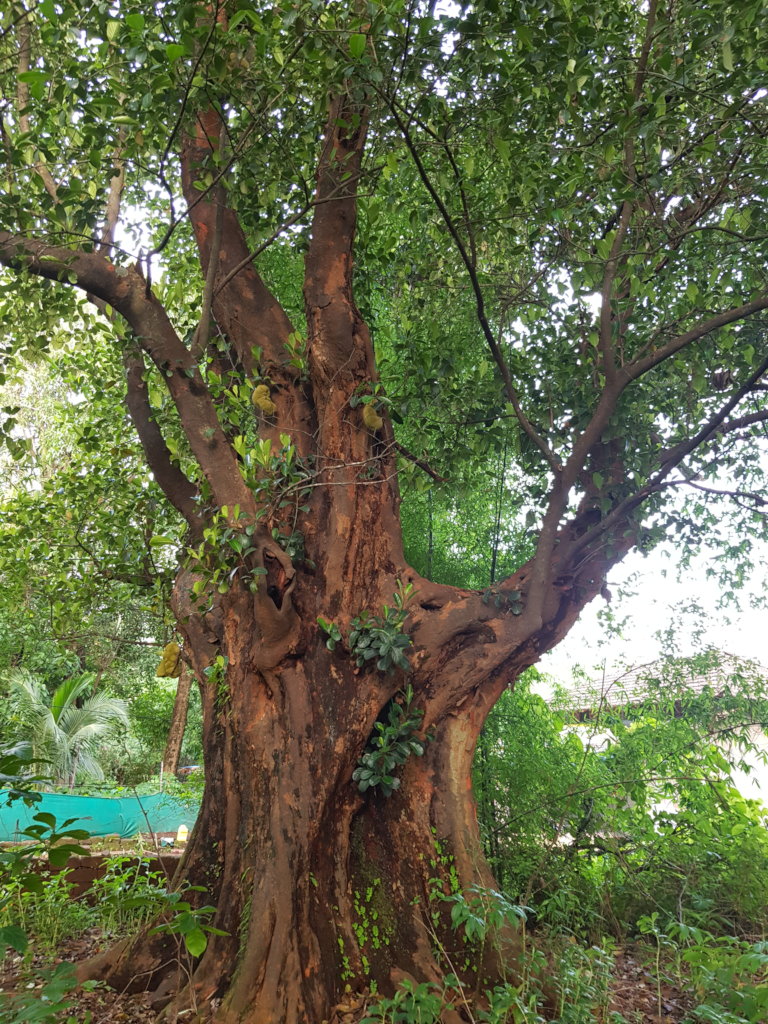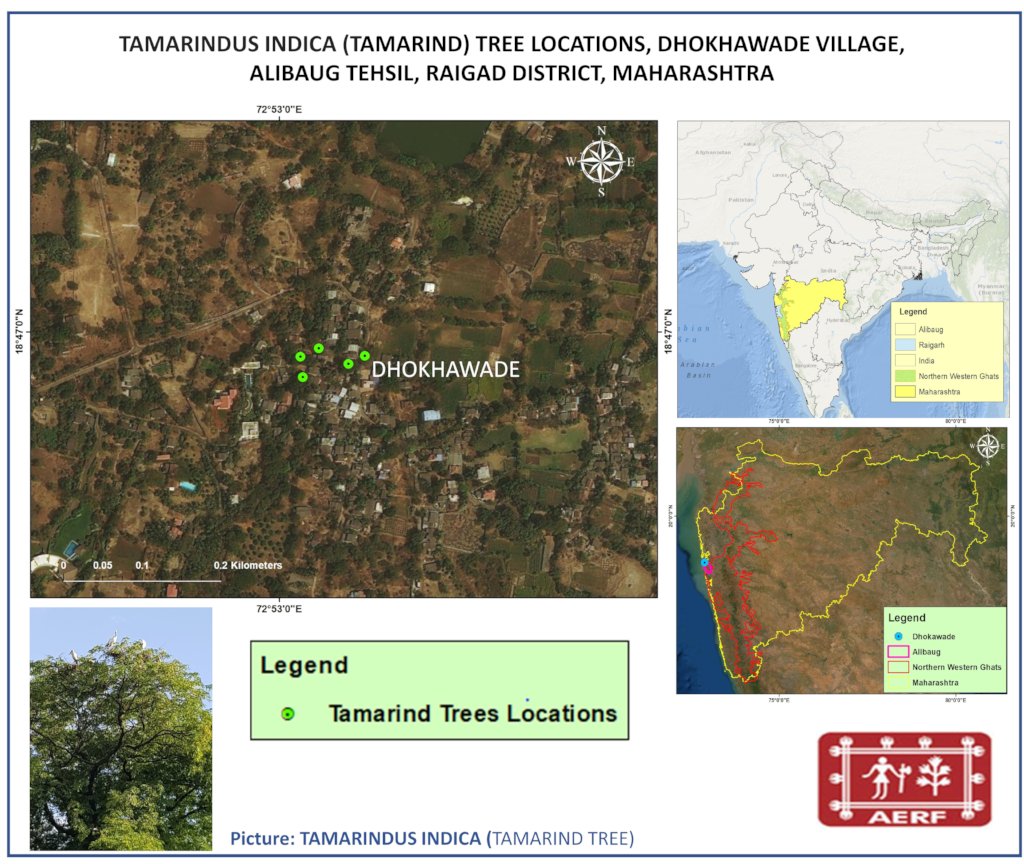By Jayant Sarnaik | Project Leader
Dear Supporter,
Greetings from India!
In the last quarter our field team from Alibaug block situated on the west coast of Maharashtra India spotted a large colony of Asian open billed stork- a big wetland and migratory bird on large remaining trees in village Dhokawade situated very close to the coast. We were quite surprised by these findings. While it takes common sense to understand an eternal connection between trees and birds but in this case it was a wetland bird and thus we thought they would ideally prefer mangroves for their breeding and roosting. After visiting the site and thinking much deeper, we realized that Giant trees play critical role in coastal areas too and that mangrove associate species such as large trees of Calophyllum innophyllum have disappeared from this region. As a result, the birds have chosen commonly found , a tree very much liked and used by the local communities- Tamarindus indicus for breeding. After talking to the local communities about the history of these birds visiting these trees, they affirmed that these birds have been regulary visiting the trees for several years. Importantly, though the birds excreta creates a foul smell in the village, the locals do not trouble the birds and understand their needs. Besides tagging the trees and understanding the ownership of these trees, AERF team members also distributed improved cook-stoves in the village for reducing the pressure on remaining vegetation and trees for meeting their energy requirements.
Besides this, we also handed over the certificate of appreciation to 40 Giant tree owners in Sangameshwar block and thus completed partially the process of rewarding the custodians of giant trees. All the owners of giant trees had interesting memories of giant trees to share with us and we are planning to bring out a story book of giant trees over the next two quarters.
After reflecting on the peculiar case of breeding of Asian open billed stork on giant trees further, we realized that local communities have in the past removed coastal forests and planted coconut trees for monetary reasons and thus all the large birds face the difficulty of finding large trees for breeding in coastal regions. It is also resulting in a conflict situation when birds such as vultures decide to establish a nest on large coconut tree and in process spreading foul smell through its excreta which may not be likened by the owner. In order to solve this human induced crisis, some conservationist are providing incentives to the coconut tree owners so that they do not poison the vultures. The solution actually lies in protecting native large tree in every ecosystem in the first place.
We draw satisfaction from the fact that we do not have to shift the goal post of conservation and have taken up the cause of saving giant trees.
Your continued interest in and support to this campaign motivates us constantly to broaden the horizon of our understanding of this wonder of nature- Giant trees and make committed efforts to save them.
Thank you.
Project reports on GlobalGiving are posted directly to globalgiving.org by Project Leaders as they are completed, generally every 3-4 months. To protect the integrity of these documents, GlobalGiving does not alter them; therefore you may find some language or formatting issues.
If you donate to this project or have donated to this project, you can receive an email when this project posts a report. You can also subscribe for reports without donating.
Support this important cause by creating a personalized fundraising page.
Start a Fundraiser